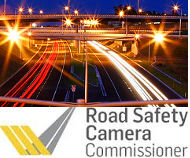8/8/2013
Australia: Safety Official Seeks Refund Of 987 Speed Camera TicketsRoad safety commissioner in Victoria, Australia finds 987 motorists were tricked in a speed camera trap.

Gordon Lewis, the Road Safety Commissioner in Victoria, Australia, on Thursday recommended 987 vehicle owners receive a refund on speed camera tickets they received in the space of a little more than an hour on the Western Ring Road. A camera trap had been set on June 30 at the Keilor Park Drive Bridge.
Ordinarily, the speed limit at the location is 100km/h (62 MPH), and few violations are issued. On June 28 and June 29 at the same location, for example, only 3 vehicle owners were mailed citations for speeding. The number of tickets issued jumped 32,930 percent on June 30, and after being questioned about the incident on talk radio, Lewis determined to get to the bottom of what happened.
On June 30, electronic speed limit signs were used to reduce the speed limit to 80km/h (50 MPH) and then once again to 40km/h (25 MPH) through a construction zone in front of the tunnel. Drivers were tricked into thinking after the end of the highway work zone, the limit would have returned to 80km/h or 100km/h. They may also have been unable to see the electronic speed limit signs because they were distracted by traffic merging from three lanes to one.
"I consider this led to the mistaken assumption by some motorists that the speed limit restriction to 40km/h was then over and they began to accelerate to what they believed was the correct speed limit," Lewis wrote. "It would seem that a herd mentality set in and many others followed their example."
Lewis added that if the agency wanted to fairly enforce the speed limit at that location, it would have placed a set of temporary 40km/h speed limit signs after the roadworks and before the bridge.
"In the interests of fairness, I recommend that Victoria Police withdraw those traffic infringement notices and issue official warnings in their place," Lewis wrote. "Any infringement penalty paid in relation to these offenses should be refunded and any demerit points reversed."
Because of the 60 km/h (37 MPH) differential in the usual speed limit and the temporary speed limit, 269 vehicle owners received serious penalties that included a license suspension ranging from one month to a year plus fines of up to $722 (which rises to $1660 for heavy vehicles). Another 718 received fines of up to $289 each. Lewis insisted the cameras themselves were perfectly accurate.
"All fixed road safety camera systems in Victoria are equipped with an independently operating and calibrated secondary speed calculation unit or secondary device," Lewis wrote. "The secondary devices at the Keilor Park Drive Bridge are inductive loop sensors installed where the radar signals hit the road. Inductive loop sensors measure a change in magnetism corresponding to the metallic content of vehicles when they travel over them."
US speed camera systems do not use this form of secondary verification. Australian systems have had no choice but to increase the safeguards after an incident in July 2003 when a 1975 Datsun 120Y was accused of speeding at 98 MPH. Even after the thirty-year-old Datsun was tested and found to be capable of reaching speeds no greater than 73 MPH, police officials dug in their heels and insisted the photo enforcement system was accurate and that the fine would stand. Intense publicity arising out of her case, however, forced an independent test of the Western Ring Road cameras that concluded faulty in-ground sensors and electromagnetic interference had been responsible for generating bogus speed readings. The state government was forced to issue $26 million in refunds.
A copy of the report is available in a PDF file at the source link below.


